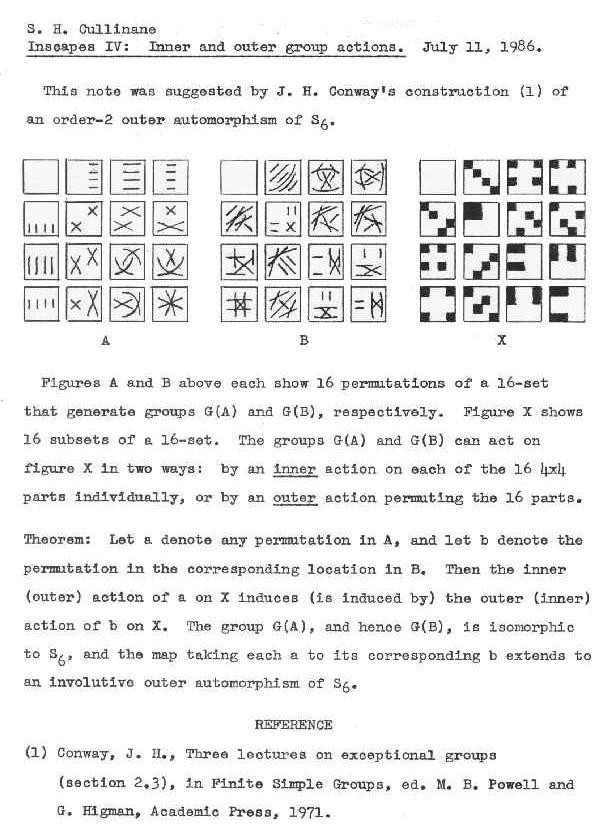Skewed Mirrors
Readings on Aesthetics for the
Feast of the Triumph of the Cross
Part I —
Bill Moyers and Julie Taymor
Director Taymor on her own passion play (see previous entry), "Frida":
"We always write stories of tragedies because that's how we reach our human depth. How we get to the other side of it. We look at the cruelty, the darkness and horrific events that happened in our life whether it be a miscarriage or a husband who is not faithful. Then you find this ability to transcend. And that is called the passion, like the passion of Christ. You could call this the passion of Frida Kahlo, in a way."
— 10/25/02 interview with Bill Moyers
|
From transcript
of 10/25/02
interview:
MOYERS: What happened to you in Indonesia.
TAYMOR: This is probably it for me. This is the story that moves me the most….
I went to Bali to a remote village by a volcanic mountain on the lake. They were having a ceremony that only happens only every 10 years for the young men. I wanted to be alone.
I was listening to this music and all of a sudden out of the darkness I could see glints of mirrors and 30 or 40 old men in full warrior costume– there was nobody in this village square. I was alone. They couldn't see me in the shadows. They came out with these spears and they started to dance. They did, I don't know, it felt like an eternity but probably a half hour dance. With these voices coming out of them. And they danced to nobody. Right after that, they and I went oh, my God. The first man came out and they were performing for God. Now God can mean whatever you want it to mean. But for me, I understood it so totally. The detail on the costumes. They didn't care if someone was paying tickets, writing reviews. They didn't care if an audience was watching. They did it from the inside to the outside. And from the outside to the in. And that profoundly moved me then.
MOYERS: How did you see the world differently after you were in Indonesia?
|
From transcript
of 11/29/02
interview:
….They did it from the inside to the outside. And from the outside to the in. And that profoundly moved me then. It was…it was the most important thing that I ever experienced. …
…………………..
MOYERS: Now that you are so popular, now that your work is…
TAYMOR: [INAUDIBLE].
MOYERS: No, I'm serious.
Now that you're popular, now that your work is celebrated and people are seeking you, do you feel your creativity is threatened by that popularity or liberated by it?
TAYMOR: No, I think it's neither one. I don't do things any differently now than I would before.
And you think that sometimes perhaps if I get a bigger budget for a movie, then it will just be the same thing…
MOYERS: Ruination. Ruination.
TAYMOR: No, because LION KING is a combination of high tech and low tech.
There are things up on that stage that cost 30 cents, like a little shadow puppet and a lamp, and it couldn't be any better than that. It just couldn't.
Sometimes you are forced to become more creative because you have limitations. ….
|
|
TAYMOR: Well I understood really the power of art to transform.
I think transformation become the main word in my life.
Transformation because you don't want to just put a mirror in front of people and say, here, look at yourself. What do you see?
You want to have a skewed mirror. You want a mirror that says you didn't know you could see the back of your head. You didn't know that you could amount cubistic see almost all the same aspects at the same time.
It allows human beings to step out of their lives and to revisit it and maybe find something different about it.
|
It's not about the technology. It's about the power of art to transform.
I think transformation becomes the main word in my life, transformation.
Because you don't want to just put a mirror in front of people and say, here, look at yourself. What do you see?
You want to have a skewed mirror. You want a mirror that says, you didn't know you could see the back of your head. You didn't know that you could…almost cubistic, see all aspects at the same time.
And what that does for human beings is it allows them to step out of their lives and to revisit it and maybe find something different about it.
|
Part II —
Inside and Outside: Transformation
(Research note, July 11, 1986)
Click on the above typewritten note to enlarge.
Summary of
Parts I and II:

See also
Geometry for Jews.
"We're not here to stick a mirror on you. Anybody can do that, We're here to give you a more cubist or skewed mirror, where you get to see yourself with fresh eyes. That's what an artist does. When you paint the Crucifixion, you're not painting an exact reproduction."
— Julie Taymor on "Frida" (AP, 10/22/02)
"She made 'real' an oxymoron,
she made mirrors, she made smoke.
She had a curve ball
that wouldn't quit,
a girlfriend for a joke."
— "Arizona Star," Guy Clark / Rich Alves


















